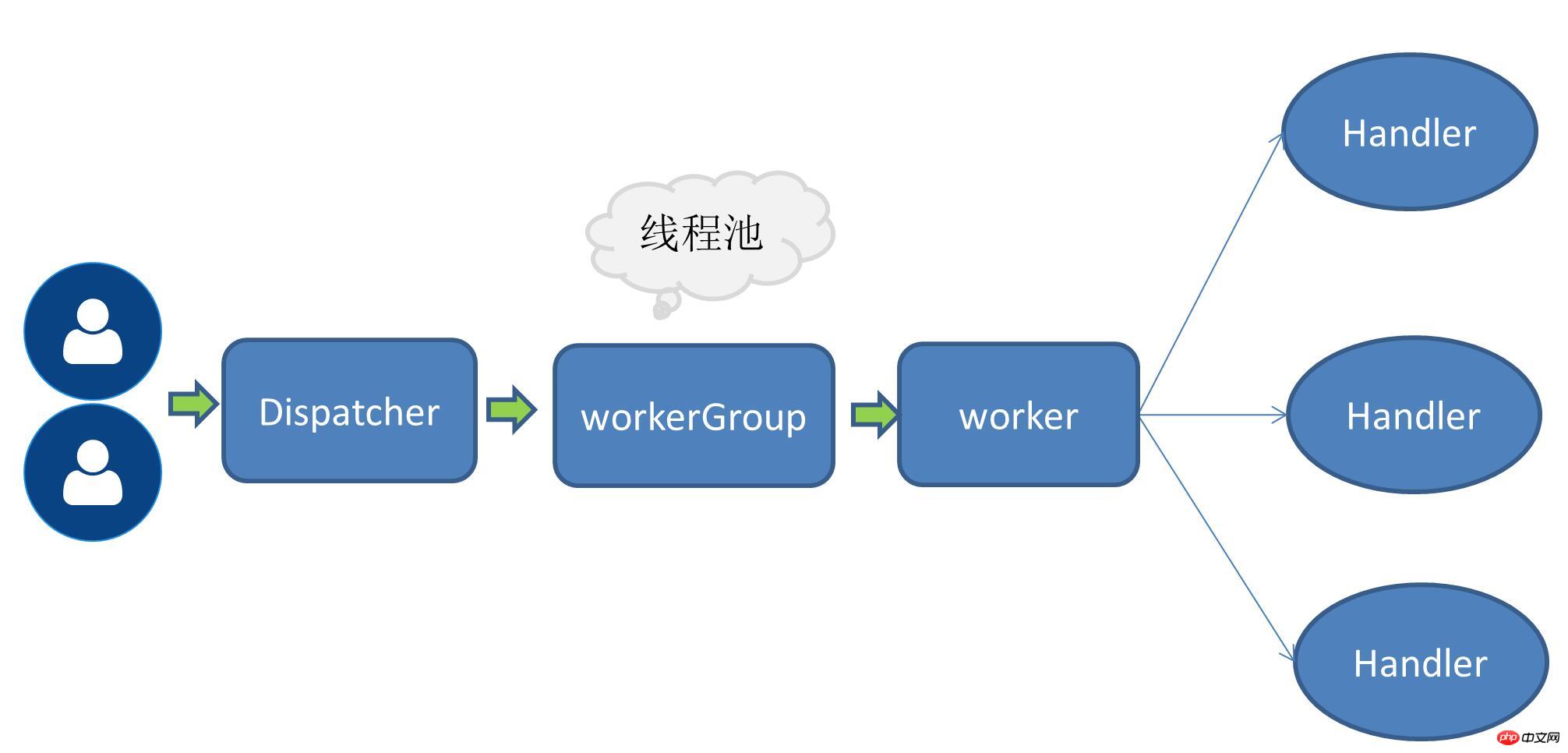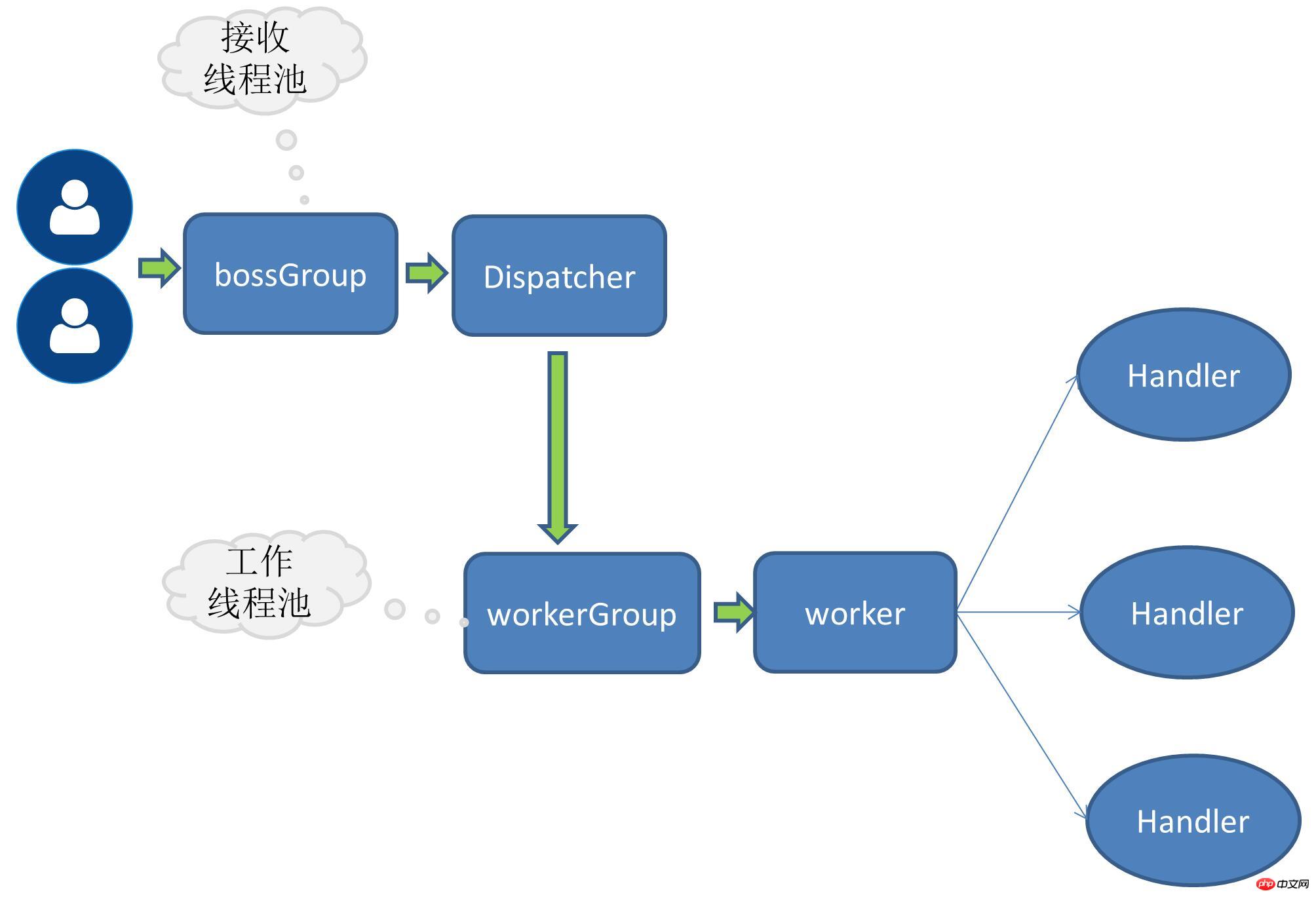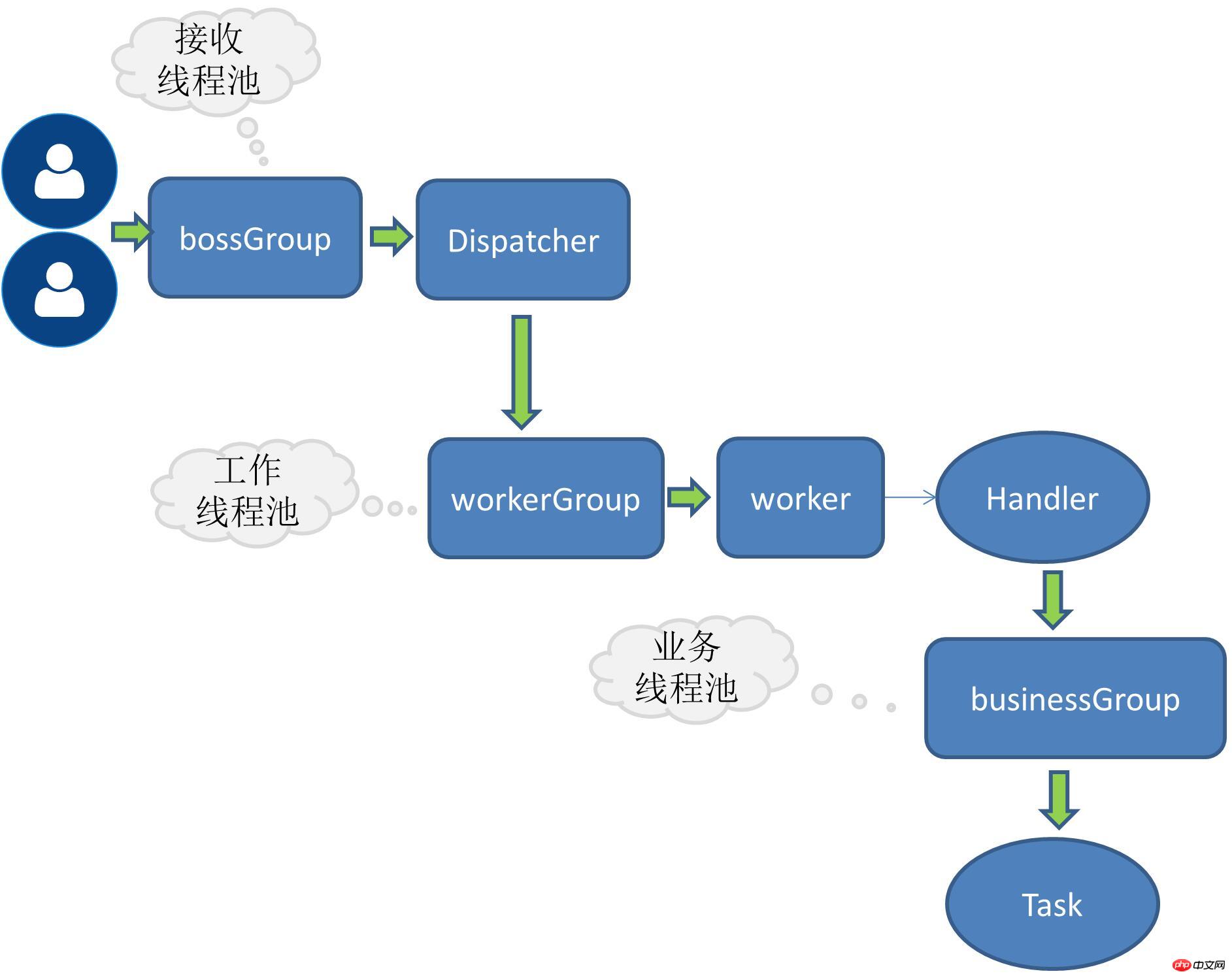Detailed examples of RPC framework
1, Background
With the development of the Internet, the scale of website applications continues to expand, and the conventional vertical application architecture can no longer cope with the distribution It is imperative to adopt a centralized service architecture and mobile computing architecture, and a governance system is urgently needed to ensure the orderly evolution of the architecture
Single application architecture
When the website traffic is very small, only one application is needed to deploy all functions together to reduce deployment nodes and costs
At this time, data access is used to simplify the workload of adding, deleting, modifying, and checking Framework (ORM) is the key
Vertical application architecture
When the number of visits gradually increases, the acceleration caused by adding machines to a single application becomes more and more The smaller it is, split the application into several unrelated applications to improve efficiency
At this time, the Web framework (MVC) used to accelerate front-end page development is the key
Distributed service architecture
Split by business line
Stop RPC abuse, give priority to vertical businesses Through local jar calls, RPC calls are used across businesses
Correctly identify the ownership of business logic, maximize the cohesion of each module, and reduce coupling in terms of performance, availability and maintainability
Only deploy some servers for each release
Each node can be scaled and expanded according to different needs
Updating, deploying, and running between each application will not affect
Deployment separation
Team separation
Data separation
When there are more and more vertical applications, interactions between applications are inevitable, and the core business must be extracted as an independent services, gradually forming a stable service center, allowing front-end applications to respond more quickly to changing market demands
At this time, a distributed service framework is used to improve business reuse and integration (RPC) is the key
Distributed Service RPC Framework
##Flow Computing Architecture
When there are more and more services, problems such as capacity evaluation and waste of small service resources gradually emerge. At this time, it is necessary to add a dispatch center to manage real-time management based on access pressure. Cluster capacity, improve cluster utilization
At this time, the resource scheduling and governance center (SOA) used to improve machine utilization is the key
Netty thread ModelNetty’s threading model is mainly based on React, and has evolved into multiple versions due to different application scenarios. Single-threaded modeThat is, receiving service requests and performing IO operations are all completed by one thread. Since non-blocking IO operations such as IO multiplexing are used, the amount of requests increases. In small cases, single-threaded mode can also solve some scene problems.



Division of work between the request thread and the worker thread
The request thread is mainly responsible for creating the link and then delegating the request to the worker thread
The working thread is responsible for encoding, decoding, reading IO and other operations
Solution implementation
The RPC I currently implement uses the multi-receiver multi-worker thread mode. The port is bound like this on the server side:
public void bind(ServiceConfig serviceConfig) {EventLoopGroup bossGroup = new NioEventLoopGroup();EventLoopGroup workerGroup = new NioEventLoopGroup();try {ServerBootstrap bootstrap = new ServerBootstrap();
bootstrap.group(bossGroup, workerGroup)
.channel(NioServerSocketChannel.class)
.childHandler(this.rpcServerInitializer)
.childOption(ChannelOption.SO_KEEPALIVE,true)
;try {ChannelFuture channelFuture = bootstrap.bind(serviceConfig.getHost(),serviceConfig.getPort()).sync();//...channelFuture.channel().closeFuture().sync();
} catch (InterruptedException e) {throw new RpcException(e);
}
}finally {
bossGroup.shutdownGracefully();
workerGroup.shutdownGracefully();
}
}boosGroup is a group used to receive service requests
workerGroup is a group specifically responsible for IO operations
To add business threads, you only need to further delegate the handle operation to the thread pool. For expansion, you need to define an interface here:
Define the thread pool interface
public interface RpcThreadPool {Executor getExecutor(int threadSize,int queues);
}Implementing a fixed size thread pool
Referenced the dubbo thread pool
@Qualifier("fixedRpcThreadPool")@Componentpublic class FixedRpcThreadPool implements RpcThreadPool {private Executor executor;@Overridepublic Executor getExecutor(int threadSize,int queues) {if(null==executor) {synchronized (this) {if(null==executor) {
executor= new ThreadPoolExecutor(threadSize, threadSize, 0L, TimeUnit.MILLISECONDS,
queues == 0 ? new SynchronousQueue<Runnable>() :(queues < 0 ? new LinkedBlockingQueue<Runnable>(): new LinkedBlockingQueue<Runnable>(queues)),new RejectedExecutionHandler() {@Overridepublic void rejectedExecution(Runnable r, ThreadPoolExecutor executor) { //...}
});
}
}
}return executor;
}
}Interlude:
Note One time, a friend suddenly asked what the coreSize in the Java thread pool meant? I was suddenly short-circuited, because I don't usually write multi-threading. When I think of the database thread pool that I usually use a lot, I am quite impressed by the parameters in it, but I just can't remember coreSize. Later, I took a closer look at some parameters of the thread pool. Now I can take this opportunity to take a closer look to avoid short-circuiting again.
Thread Pool Factory
When there are multiple thread pool implementations, the thread pool is dynamically selected through the thread pool name.
@Componentpublic class RpcThreadPoolFactory {@Autowiredprivate Map<String,RpcThreadPool> rpcThreadPoolMap;public RpcThreadPool getThreadPool(String threadPoolName){return this.rpcThreadPoolMap.get(threadPoolName);
}
}Modify the channelRead0 method of ChannelHandle
Wrap the method body into a Task and hand it over to the thread pool for execution.
@Overrideprotected void channelRead0(ChannelHandlerContext channelHandlerContext, RpcRequest rpcRequest) {this.executor.execute(new Runnable() {@Overridepublic void run() {RpcInvoker rpcInvoker=RpcServerInvoker.this.buildInvokerChain(RpcServerInvoker.this);RpcResponse response=(RpcResponse) rpcInvoker.invoke(RpcServerInvoker.this.buildRpcInvocation(rpcRequest));
channelHandlerContext.writeAndFlush(response);
}
});
}Question
Currently there is a lack of stress testing, so there is no clear data comparison for the time being.
The above is the detailed content of Detailed examples of RPC framework. For more information, please follow other related articles on the PHP Chinese website!

Hot AI Tools

Undresser.AI Undress
AI-powered app for creating realistic nude photos

AI Clothes Remover
Online AI tool for removing clothes from photos.

Undress AI Tool
Undress images for free

Clothoff.io
AI clothes remover

Video Face Swap
Swap faces in any video effortlessly with our completely free AI face swap tool!

Hot Article

Hot Tools

Notepad++7.3.1
Easy-to-use and free code editor

SublimeText3 Chinese version
Chinese version, very easy to use

Zend Studio 13.0.1
Powerful PHP integrated development environment

Dreamweaver CS6
Visual web development tools

SublimeText3 Mac version
God-level code editing software (SublimeText3)

Hot Topics
 How to evaluate the cost-effectiveness of commercial support for Java frameworks
Jun 05, 2024 pm 05:25 PM
How to evaluate the cost-effectiveness of commercial support for Java frameworks
Jun 05, 2024 pm 05:25 PM
Evaluating the cost/performance of commercial support for a Java framework involves the following steps: Determine the required level of assurance and service level agreement (SLA) guarantees. The experience and expertise of the research support team. Consider additional services such as upgrades, troubleshooting, and performance optimization. Weigh business support costs against risk mitigation and increased efficiency.
 How does the learning curve of PHP frameworks compare to other language frameworks?
Jun 06, 2024 pm 12:41 PM
How does the learning curve of PHP frameworks compare to other language frameworks?
Jun 06, 2024 pm 12:41 PM
The learning curve of a PHP framework depends on language proficiency, framework complexity, documentation quality, and community support. The learning curve of PHP frameworks is higher when compared to Python frameworks and lower when compared to Ruby frameworks. Compared to Java frameworks, PHP frameworks have a moderate learning curve but a shorter time to get started.
 Performance comparison of Java frameworks
Jun 04, 2024 pm 03:56 PM
Performance comparison of Java frameworks
Jun 04, 2024 pm 03:56 PM
According to benchmarks, for small, high-performance applications, Quarkus (fast startup, low memory) or Micronaut (TechEmpower excellent) are ideal choices. SpringBoot is suitable for large, full-stack applications, but has slightly slower startup times and memory usage.
 How do the lightweight options of PHP frameworks affect application performance?
Jun 06, 2024 am 10:53 AM
How do the lightweight options of PHP frameworks affect application performance?
Jun 06, 2024 am 10:53 AM
The lightweight PHP framework improves application performance through small size and low resource consumption. Its features include: small size, fast startup, low memory usage, improved response speed and throughput, and reduced resource consumption. Practical case: SlimFramework creates REST API, only 500KB, high responsiveness and high throughput
 Golang framework documentation best practices
Jun 04, 2024 pm 05:00 PM
Golang framework documentation best practices
Jun 04, 2024 pm 05:00 PM
Writing clear and comprehensive documentation is crucial for the Golang framework. Best practices include following an established documentation style, such as Google's Go Coding Style Guide. Use a clear organizational structure, including headings, subheadings, and lists, and provide navigation. Provides comprehensive and accurate information, including getting started guides, API references, and concepts. Use code examples to illustrate concepts and usage. Keep documentation updated, track changes and document new features. Provide support and community resources such as GitHub issues and forums. Create practical examples, such as API documentation.
 How to choose the best golang framework for different application scenarios
Jun 05, 2024 pm 04:05 PM
How to choose the best golang framework for different application scenarios
Jun 05, 2024 pm 04:05 PM
Choose the best Go framework based on application scenarios: consider application type, language features, performance requirements, and ecosystem. Common Go frameworks: Gin (Web application), Echo (Web service), Fiber (high throughput), gorm (ORM), fasthttp (speed). Practical case: building REST API (Fiber) and interacting with the database (gorm). Choose a framework: choose fasthttp for key performance, Gin/Echo for flexible web applications, and gorm for database interaction.
 Java Framework Learning Roadmap: Best Practices in Different Domains
Jun 05, 2024 pm 08:53 PM
Java Framework Learning Roadmap: Best Practices in Different Domains
Jun 05, 2024 pm 08:53 PM
Java framework learning roadmap for different fields: Web development: SpringBoot and PlayFramework. Persistence layer: Hibernate and JPA. Server-side reactive programming: ReactorCore and SpringWebFlux. Real-time computing: ApacheStorm and ApacheSpark. Cloud Computing: AWS SDK for Java and Google Cloud Java.
 What are the common misunderstandings in the learning process of Golang framework?
Jun 05, 2024 pm 09:59 PM
What are the common misunderstandings in the learning process of Golang framework?
Jun 05, 2024 pm 09:59 PM
There are five misunderstandings in Go framework learning: over-reliance on the framework and limited flexibility. If you don’t follow the framework conventions, the code will be difficult to maintain. Using outdated libraries can cause security and compatibility issues. Excessive use of packages obfuscates code structure. Ignoring error handling leads to unexpected behavior and crashes.






